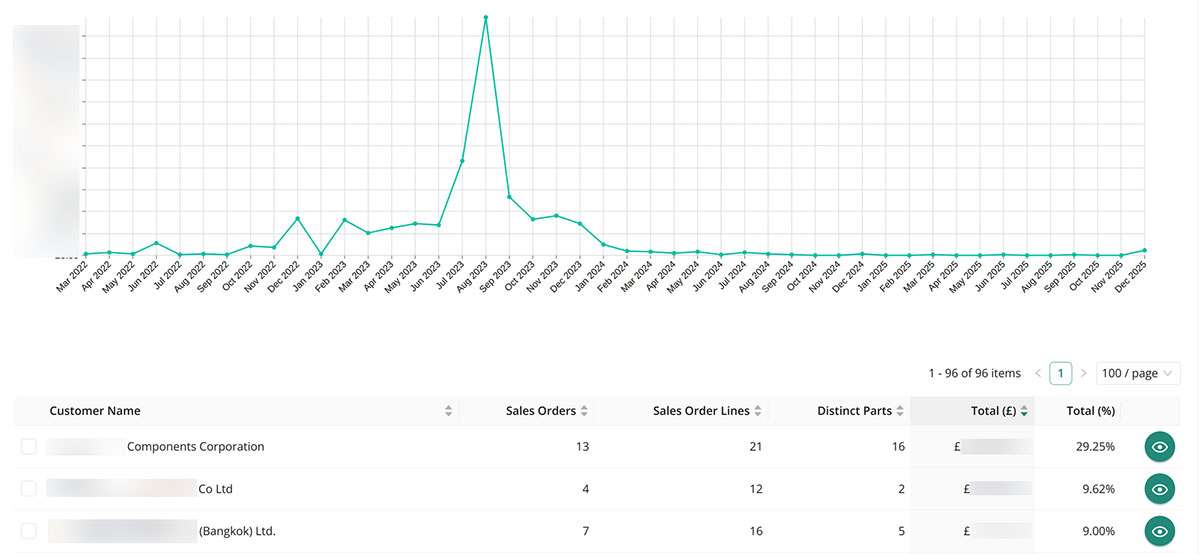Challenge
Understanding the size of your company’s order book, the percentage breakdown of revenue by customer, the number of stock codes being sold across customers, and the number of open sales order lines is all important information when it comes to strategic decision making on a daily and weekly basis. At Batten&Allen, their order book information was locked up inside their existing MRP/ERP system as sales order lines.
To make the best business decisions, senior management knew that they needed this information in a highly visual, interactive and real-time manner.
Our Solution
Operational Software worked with stakeholders to understand what was important when it came to making decisions on order book information. We then sourced the location of the sales order lines information in their existing system. The result was a clean and interactive dashboard consisting of:
– A set of filters enabling filtering across date and various attributes such as product group code, sales type, region, etc.
– An interactive line chart showing how the total sales of the currently selected filters vary by day, month, quarter or year.
– A table showing the breakdown of customers that make up the order book data and the option to print this information as a PDF report.
– The option to view the currently filtered, active sales order line by customer at the click of a button with an option to print this information as a PDF report.

Annual Return on Investment
Prior to this solution, order book information was obtained by manipulating a stock sales report with Microsoft Excel which was a time consuming and error-prone process. Once created, spreadsheets didn’t offer the same depth or breadth of analysis. Time-based savings alone are estimated to be in the region of £5,000 per annum through the removal manual reporting and dissemination tasks. There is also an unestimated value attributed to the quality and real-time nature of this information in making strategic decisions expected to be significantly higher.
Other benefits include:

